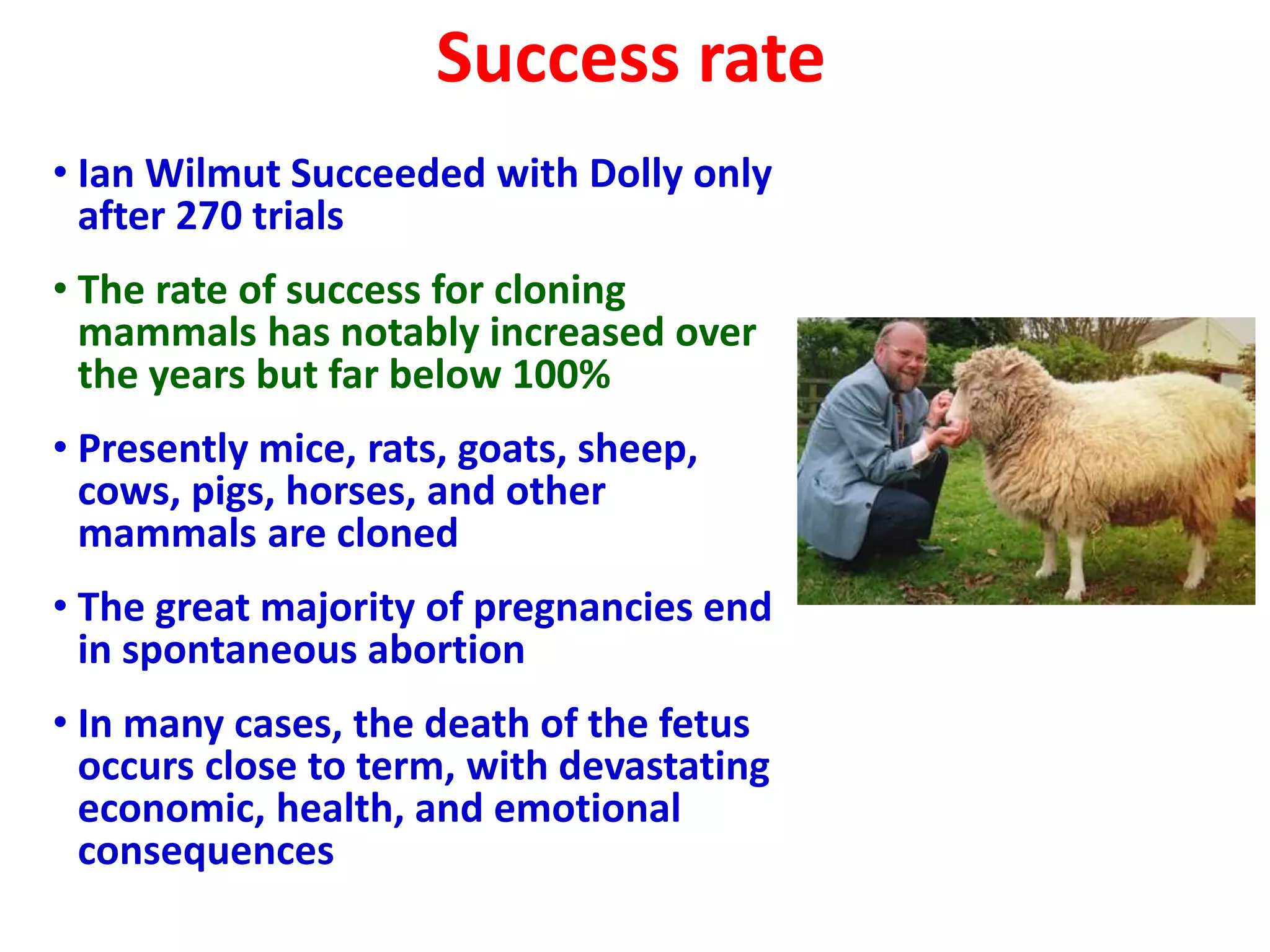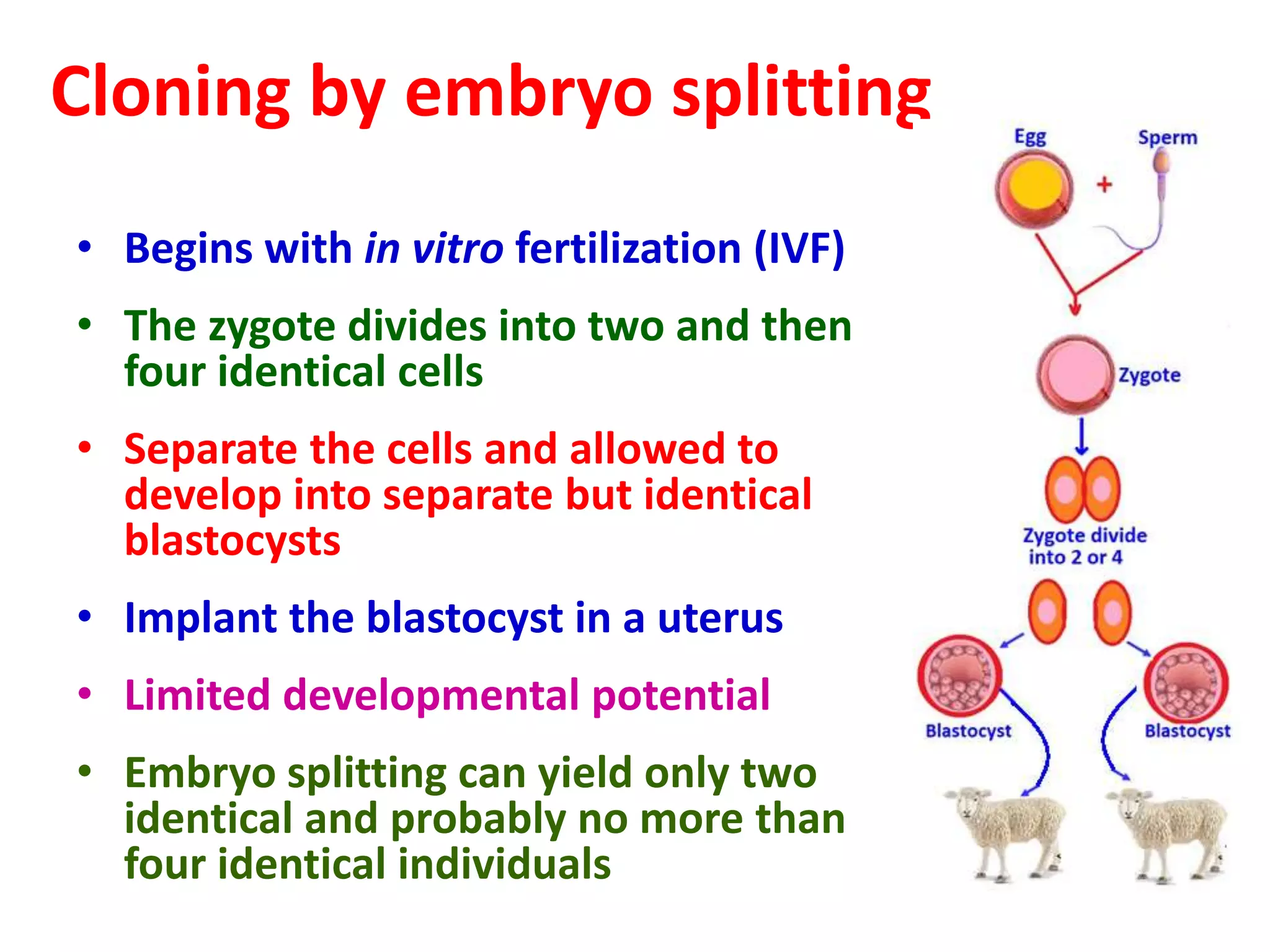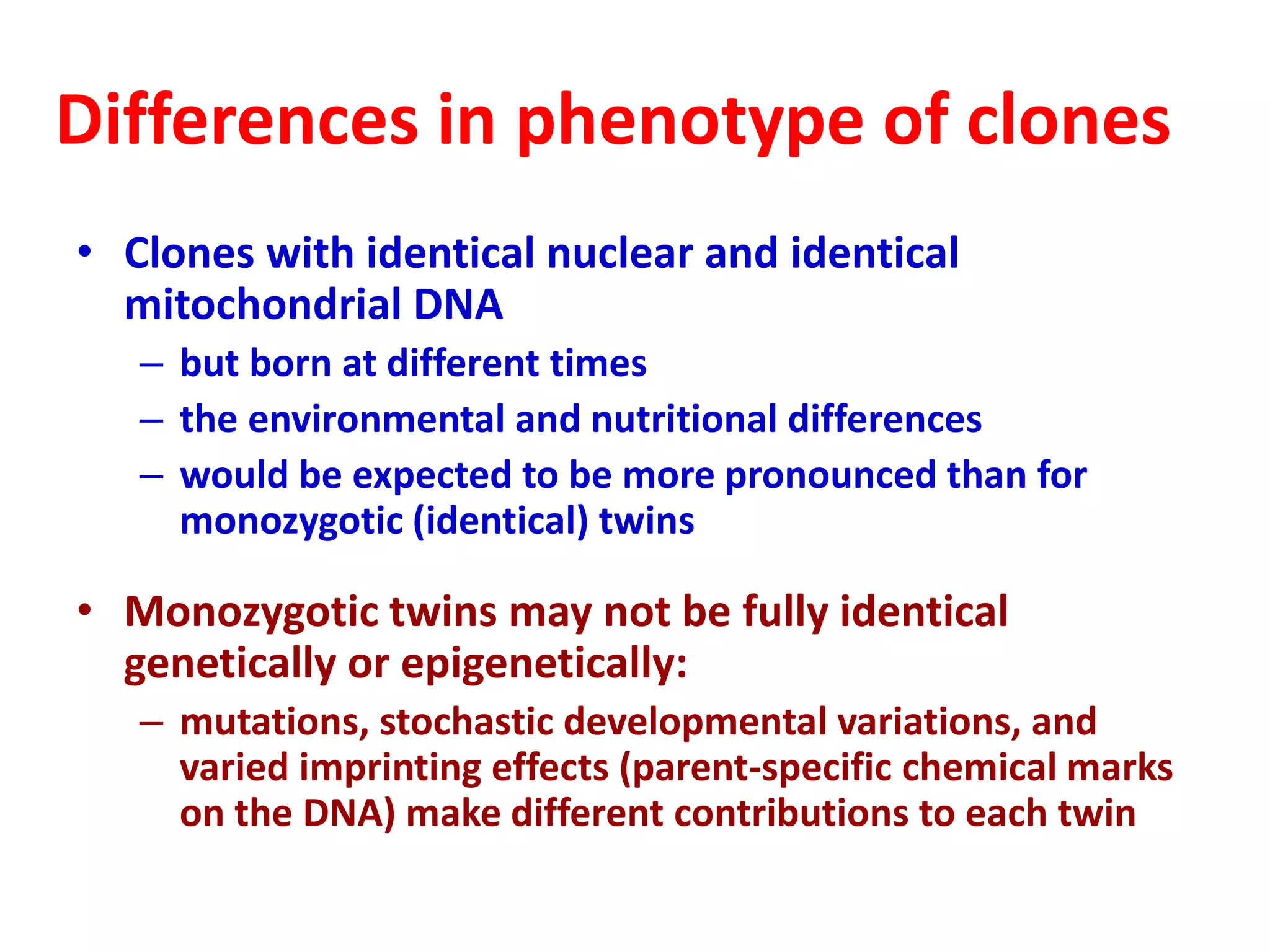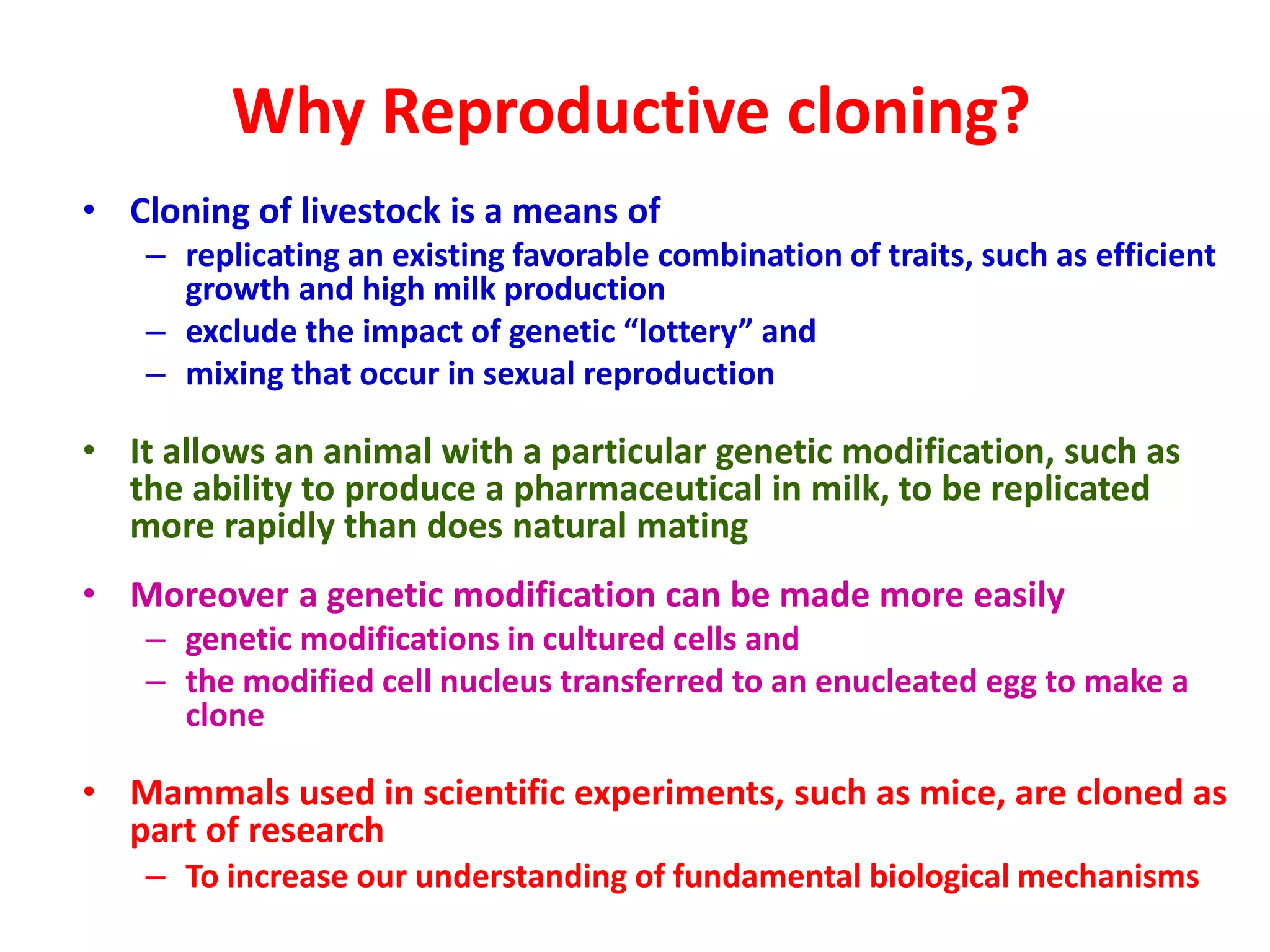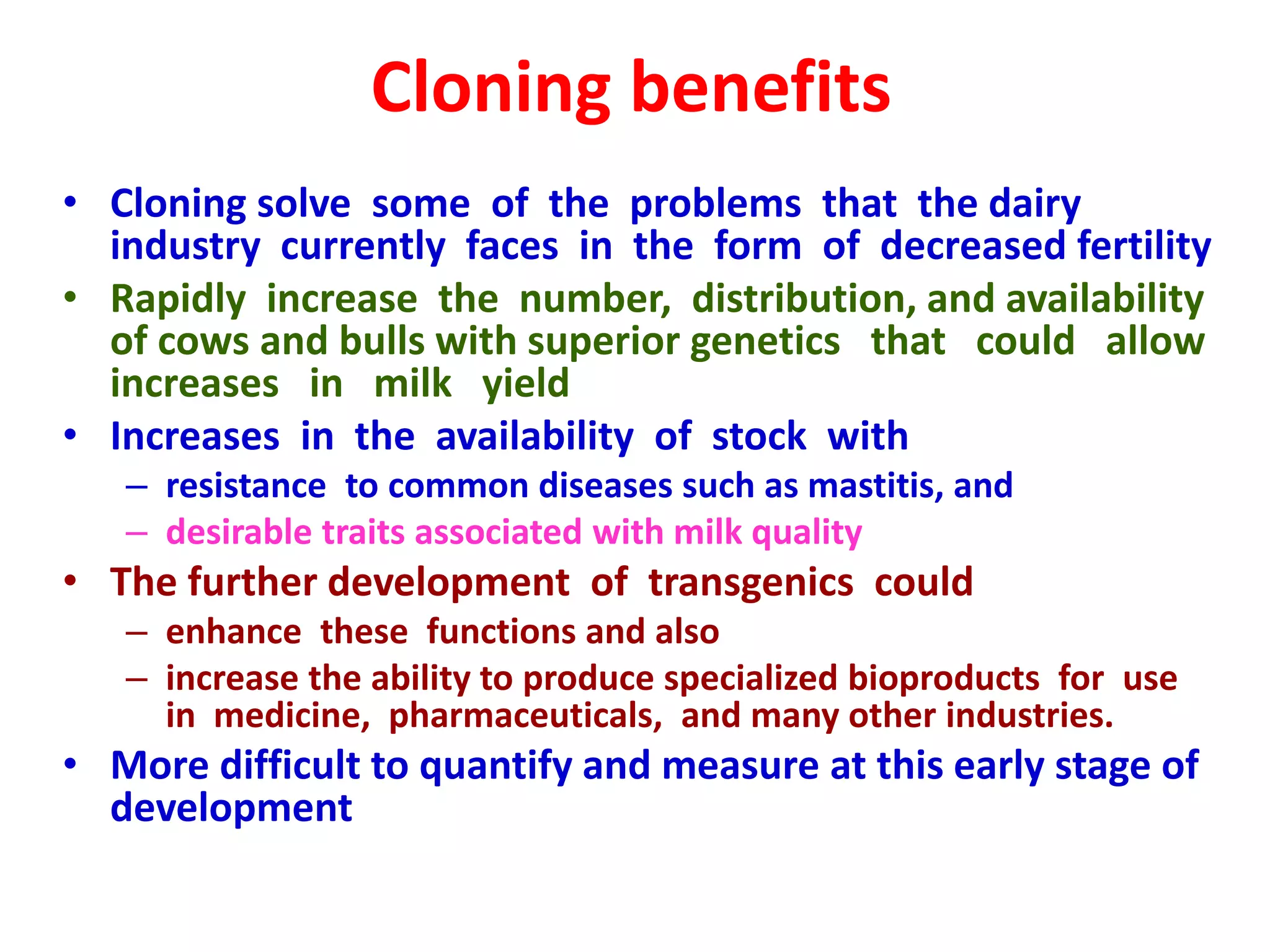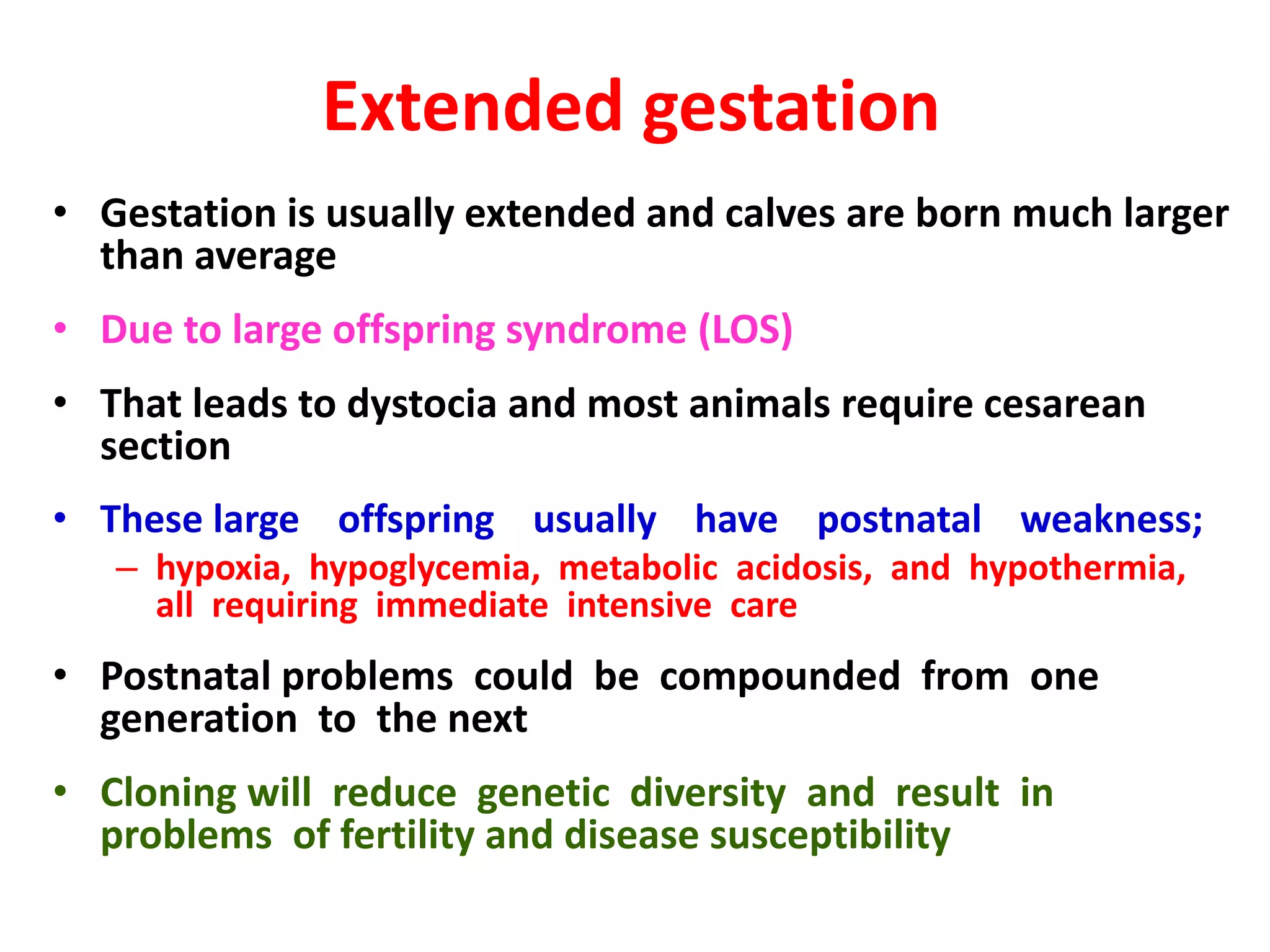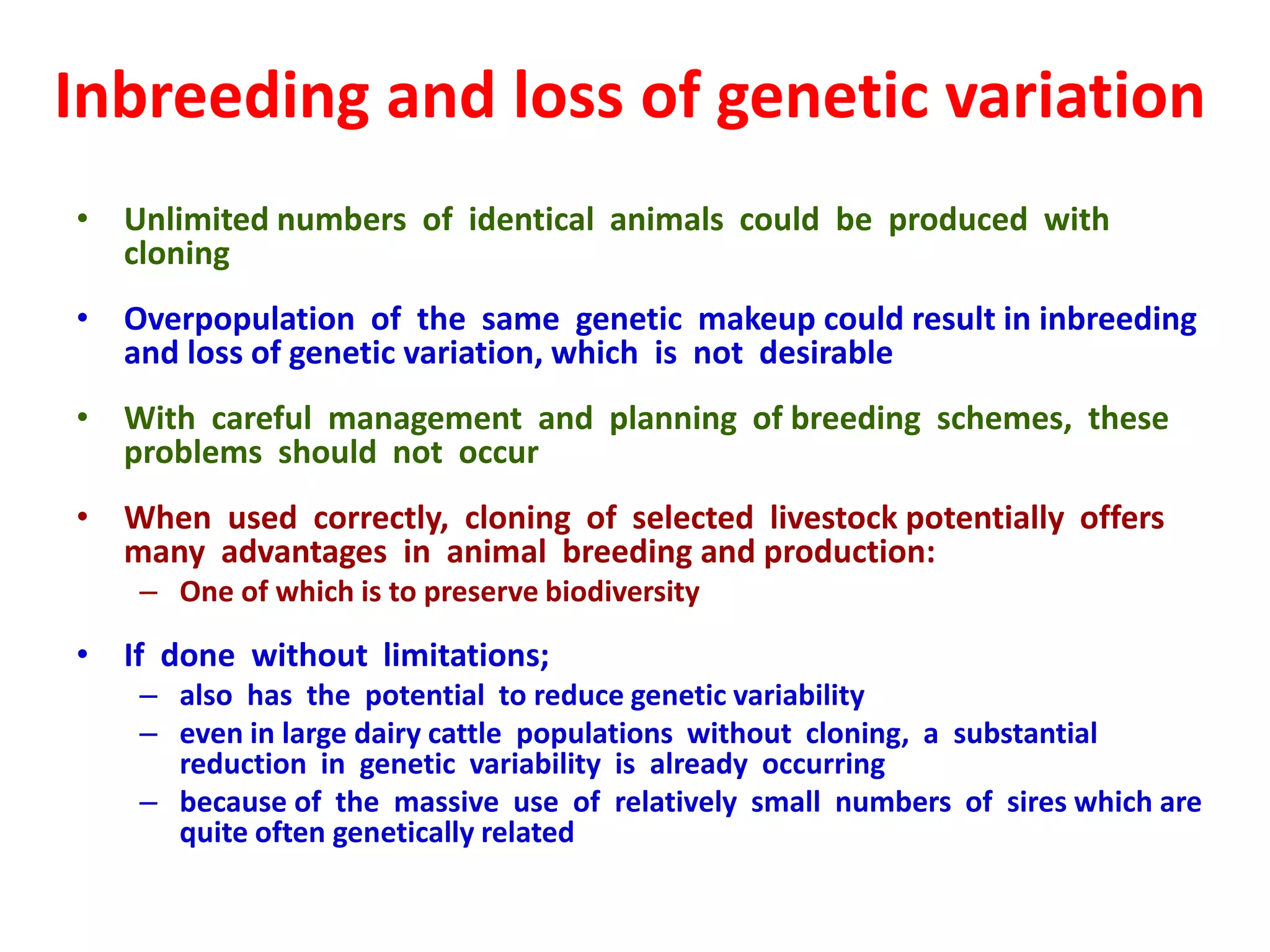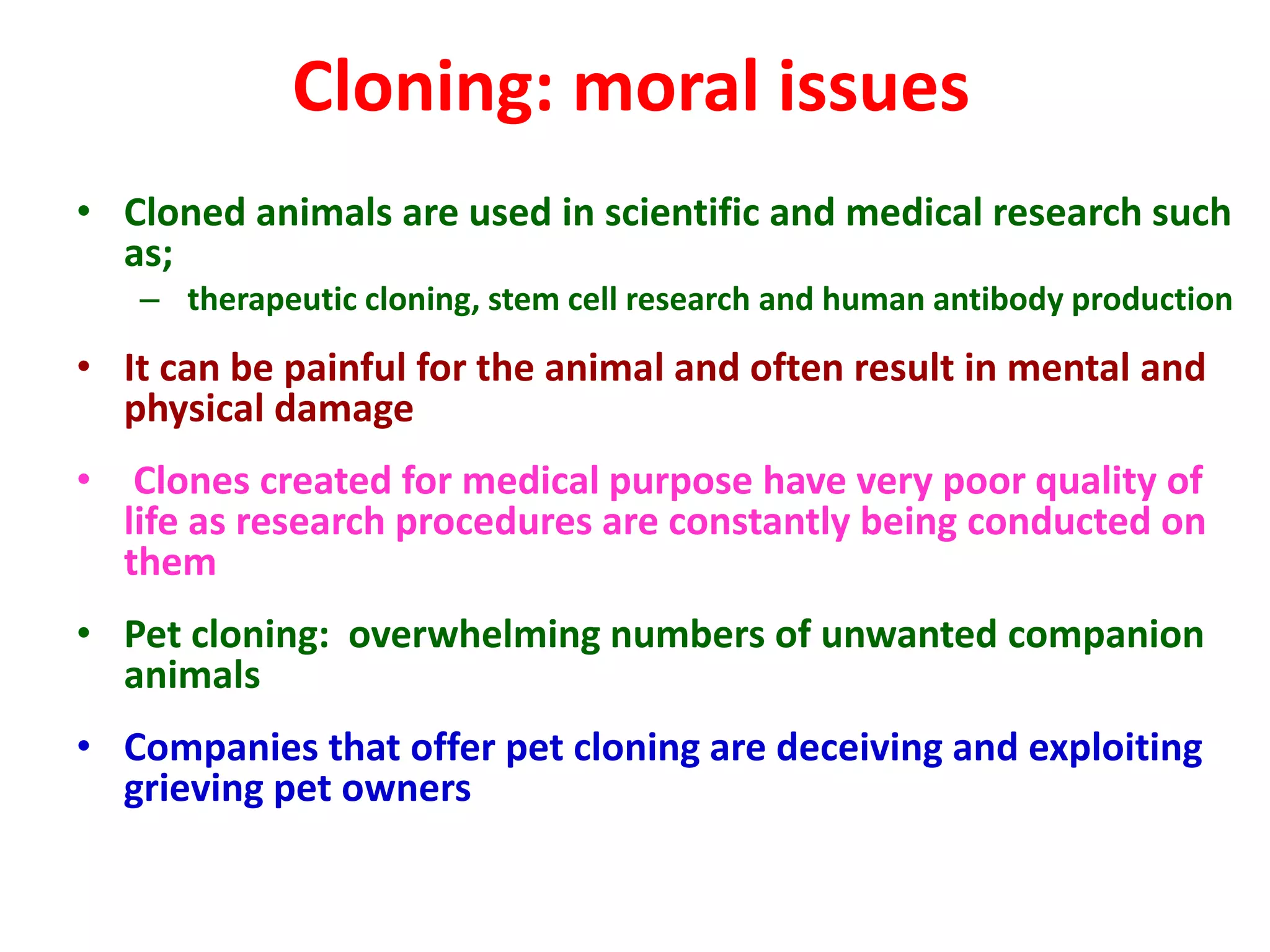The document discusses various aspects of cloning in biology, including definitions, types (gene, cell, and individual cloning), and methods like somatic cell nuclear transfer (SCNT) and embryo splitting. It highlights the complexities and ethical concerns surrounding human cloning, as well as its applications in agriculture and therapeutic contexts. Additionally, it addresses the limitations and drawbacks of cloning, such as low success rates, genetic uniformity risks, and potential health issues for cloned animals.








